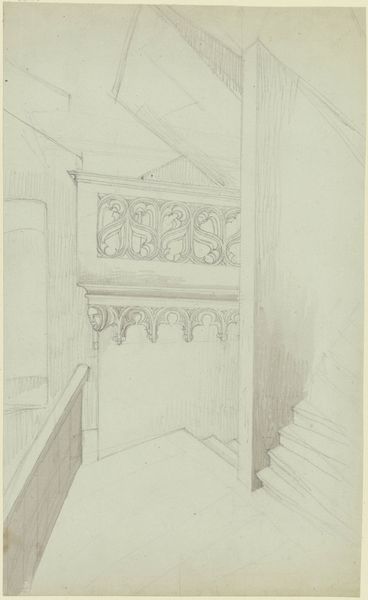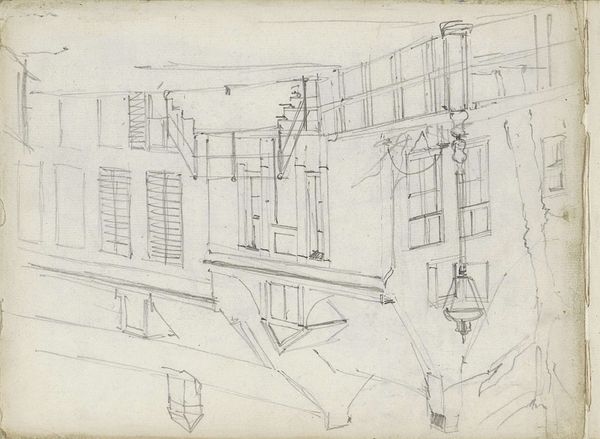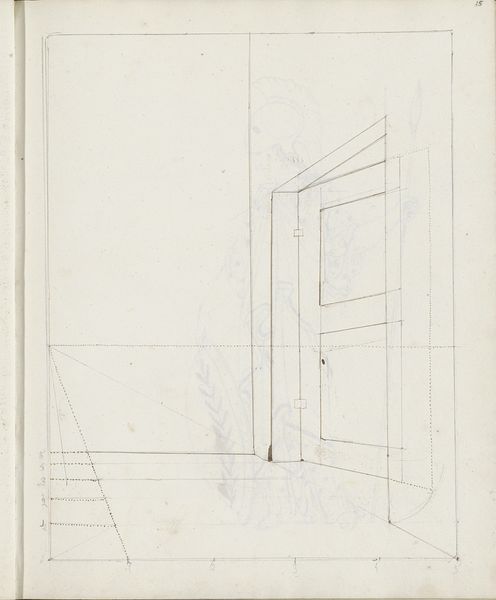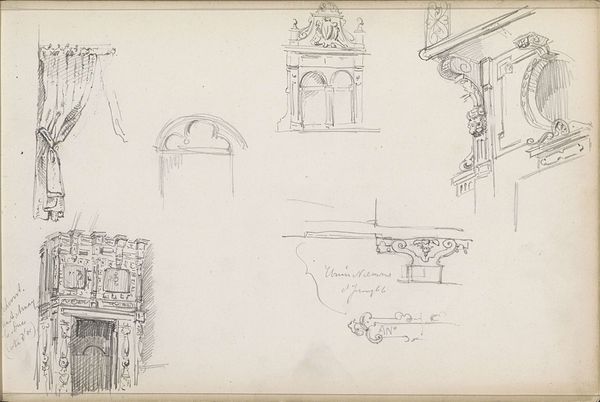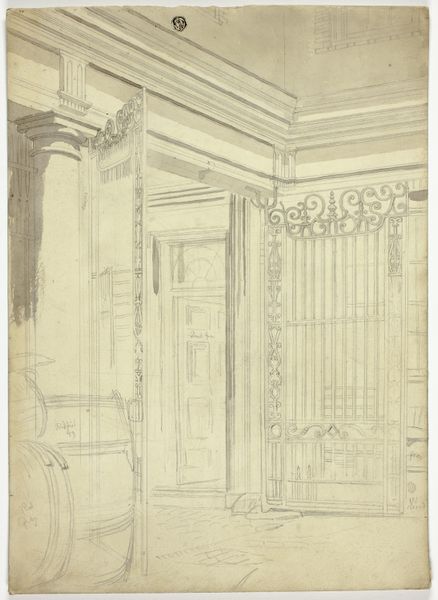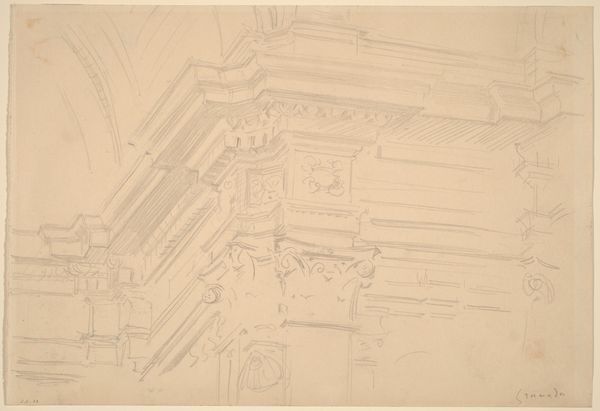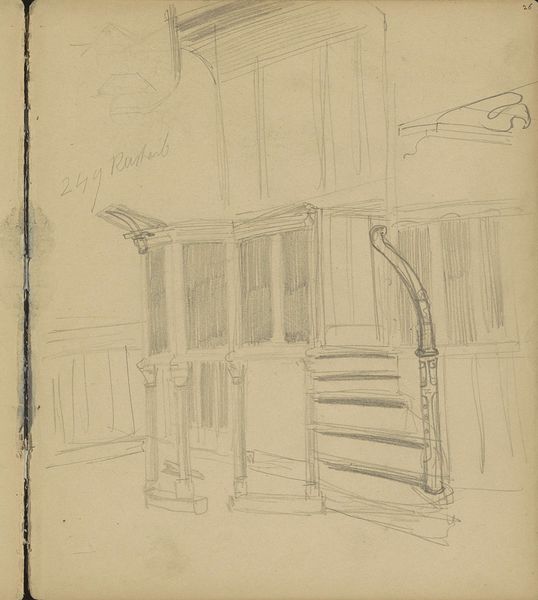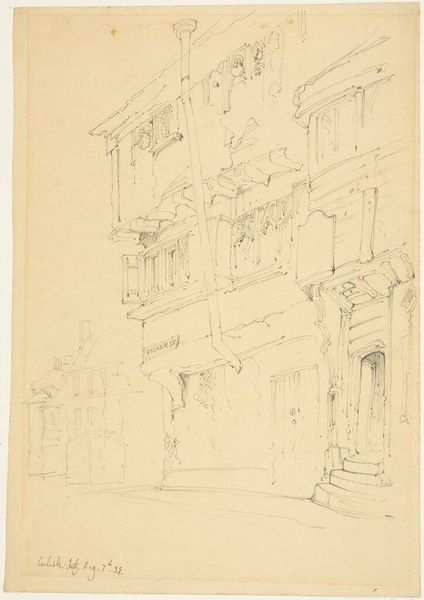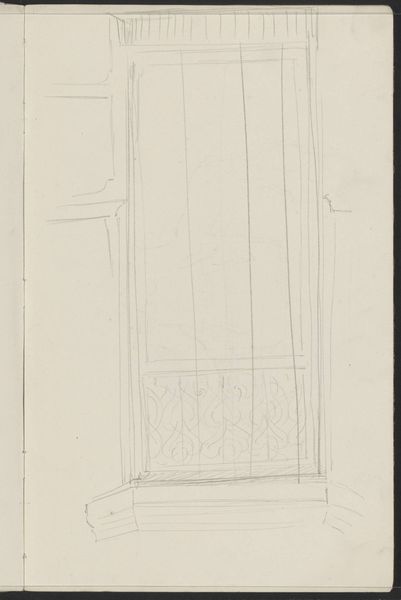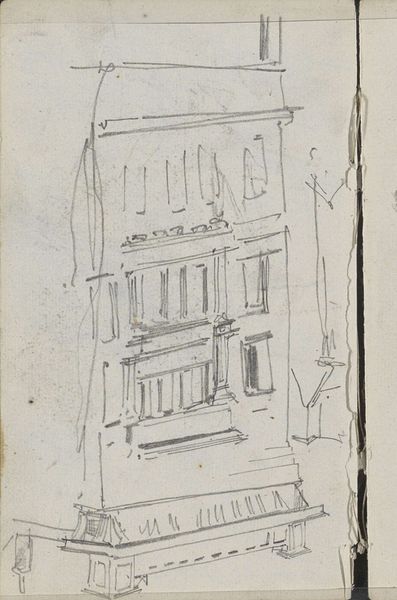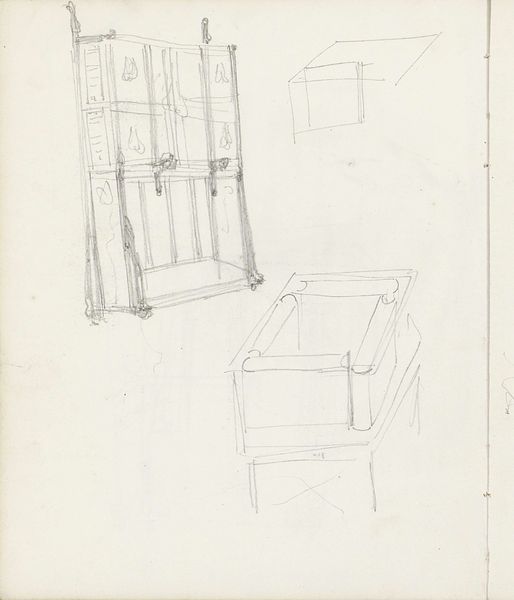
drawing, paper, pencil, architecture
#
architectural sketch
#
drawing
#
aged paper
#
toned paper
#
art-nouveau
#
homemade paper
#
sketch book
#
paper
#
form
#
personal sketchbook
#
sketchwork
#
geometric
#
pencil
#
architectural drawing
#
line
#
architecture drawing
#
storyboard and sketchbook work
#
architecture
Copyright: Rijks Museum: Open Domain
Curator: A somewhat hazy impression, wouldn't you say? At first glance, it’s as if I am peering into a hazy memory, perhaps. Editor: Indeed. This is Carel Adolph Lion Cachet’s "Ontwerp voor een plafond voor het schip 'Grotius'," a pencil drawing on paper, created around 1906. What speaks to me are the tonal variations achieved with simple pencil strokes. Curator: Yes, and consider how the geometric forms interact. The rectangles and curves create an intricate play of depth and perspective, particularly in the illusion of receding space—classic Art Nouveau. It's not just a design, it is an interplay between line and space, an attempt to capture something essential about the architectural form. Editor: From a material perspective, look at the aged quality of the paper. One senses the hand of the artist, the physical act of applying graphite to surface, the craft that defines his output. It speaks to the era. Mass production, perhaps, yet here is something uniquely created and conceived as one work. Curator: I’d suggest there’s more to be considered regarding form, notably the inherent abstraction. Note how Cachet reduces the architectural details to bare essentials; there’s something deeply satisfying in its minimalism. The function almost doesn’t matter. Editor: Well, considering Cachet's involvement in design for ships like the 'Grotius,' the social and industrial contexts were clearly very impactful in what he envisioned. It’s a blend of artistic sensibility and practical application; his hand directly shaping these architectural forms within larger constructs. Curator: Perhaps. Ultimately it feels more like an investigation of shapes, shadows, and compositions to me. Editor: But the sketch exists precisely due to this period of shipbuilding fervor. Seeing this allows us to see his work’s value from different angles. Curator: I admit there’s value to both readings of the work—an interior space of the artist, and the exterior space as design element. Editor: Seeing his art in context allows it, perhaps, to live beyond pure formalism, bringing history into his making.
Comments
No comments
Be the first to comment and join the conversation on the ultimate creative platform.
